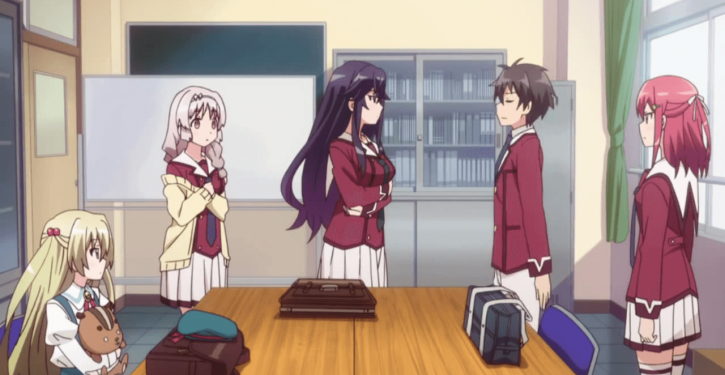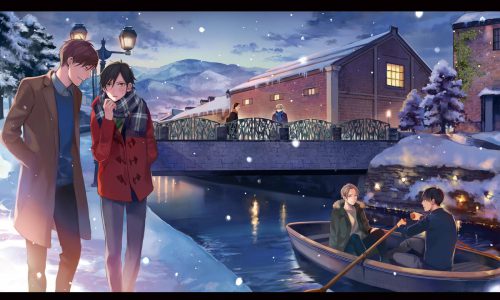The school campus is one of the most popular settings in manga and anime, appearing across a wide range of genres with varying degrees of realism. But what are the real world bases of these institutions like? Let’s take a look at some of the iconic features of Japanese schools.
Building & Classrooms
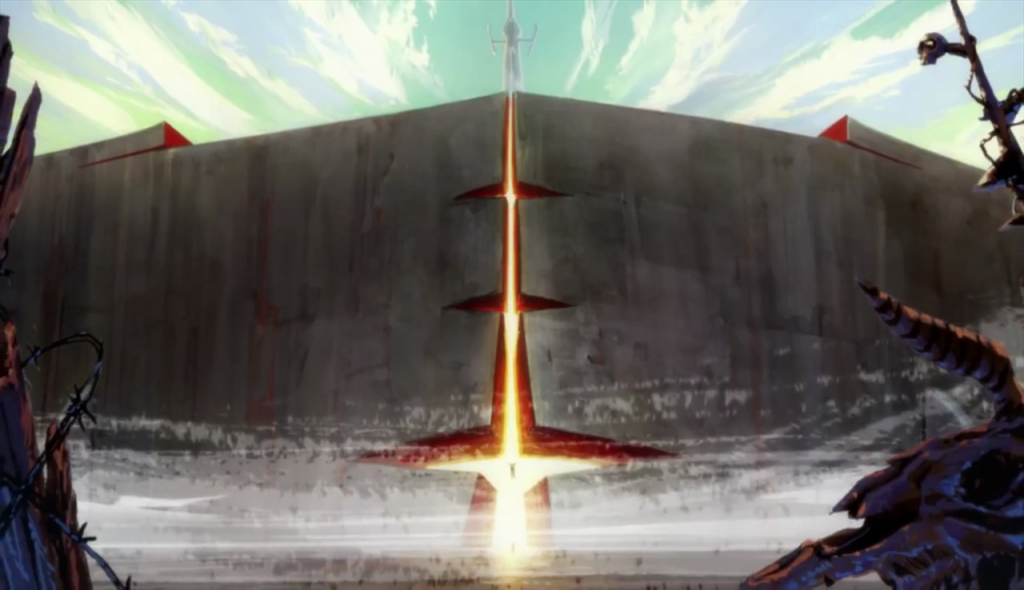
Source: Kill la Kill
Beyond the grated iron gates, the solid, sturdy campus building looms over the school grounds, an open space flanked by cherry blossoms… Well, the cherry blossoms are optional, but this standard introductory shot of the school’s façade should be familiar to everyone who’d run into plenty of school life titles.
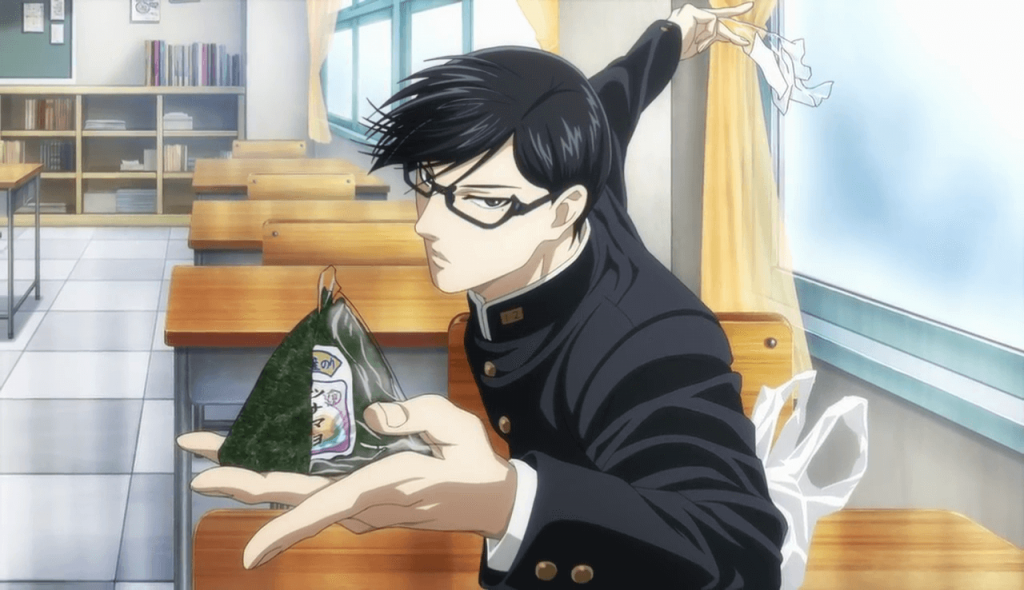
Source: Sakamoto desu ga?
From generally realistic schools of daily life works like Sakamoto desu ga? to the thematically-adapted schools of fantastical titles like Kill la Kill, school buildings have shown that while their designs can change greatly, some aspects of their architecture remain curiously consistent across the board. Is there some sort of cheat sheet or template for designing fictional schools that everyone uses? Or is there a sort of standardized look that most of the schools in reality also adheres to?
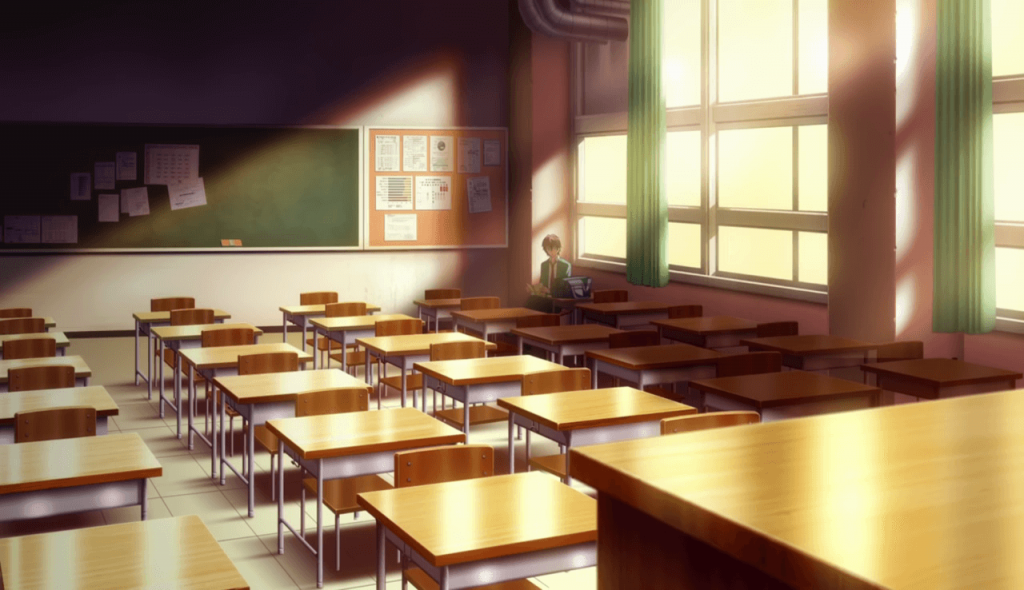
Source: Zutto Mae Kara Suki Deshita
It must be said that, quite obviously, fiction is often just based on fact, but even in reality Japanese schools are on the whole quite homogenous. To pick an example, let us talk about their classrooms. The layout of these rooms are more or less identical in reality as well, meaning that, barring the minority of exceptions, you can find the same items in any classroom you visit. Everyone would know to expect the dark green chalkboard, the teacher’s podium in front of it, the wood-and-steel-pipe tables and chairs arranged in neat rows after that, and then notice boards at the back of the class. On one side there will be rows of sliding-type windows, and on the other side there will be two sliding doors, one at the front, and one more at the back of the room connected to the same stretch of corridor.
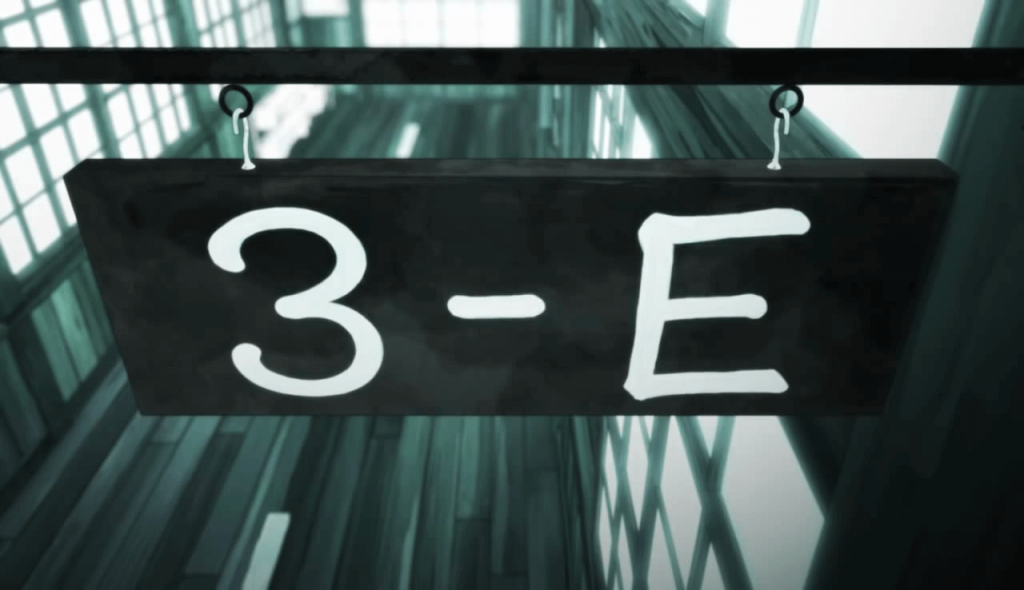
Source: Ansatsu Kyoushitsu
One may say that these features are indispensable in bringing out that ‘Japanese classroom’ look. Another decidedly archetypal feature is probably the classroom label, usually sticking out of the nearest pillar to the classroom door. Classes in the schools are usually structured so that there are several sections for the same grade level, labeled with the format “(school year)+(section)”. If you see a shot of one such board saying “1-A” or “2-1″, you can be reasonably sure you’re looking at a Japanese classroom.
Uniforms
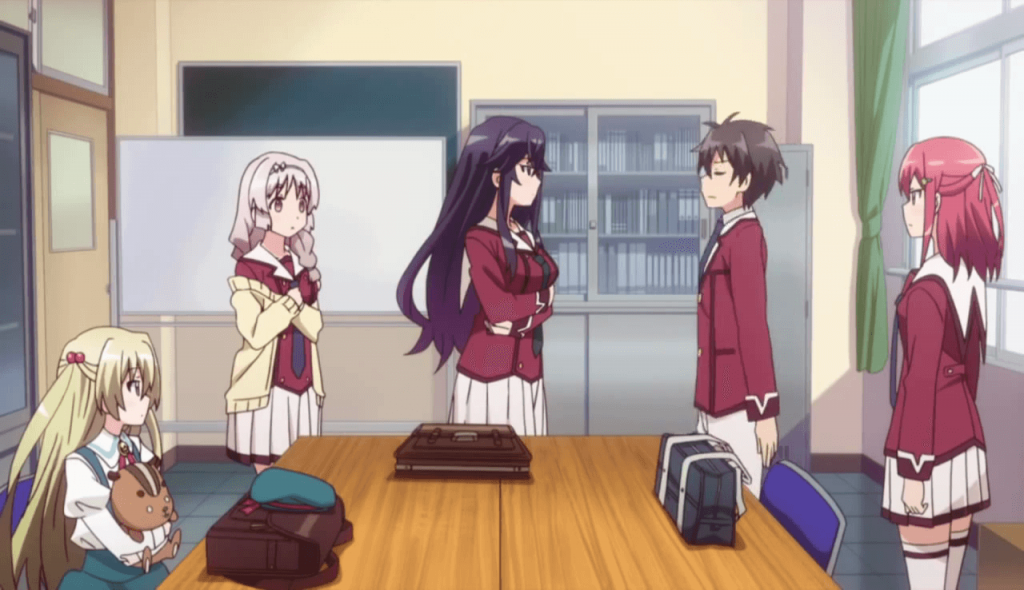
Source: Inou-Battle wa Nichijou-kei no Naka de
Ahh, uniforms! Perhaps the most well-known feature of the schools, Japanese school uniforms enjoy great popularity among both local and overseas fans, which is not surprising considering they do look quite aesthetically pleasing no matter which version you roll with. Speaking of versions, while the phrase “Japanese school uniform” probably brings to mind the image of the iconic sailor-fuku for most people, regulars of the school life genre, or even manga and anime in general, will likely be able to point out that it isn’t the only type that exists. With every title’s cast having their own unique school uniforms, you can find thousands of stylized uniform variations, but broadly put, you can assume most of them will fall under either of these major two categories:
・The Sailor-fuku & the Gakuran

Source: Hyouka
This one is probably the more ‘Japanese’ school uniform set–the girls’ sailor-fuku and the boys’ gakuran. These two designs originated around a century ago, around the time when western clothing began to become common in Japan. The sailor-fuku, as is obvious from the name, was based on actual sailor’s uniform. A prevailing theory suggests that it might have been adapted from the design used by the English Navy in the Meiji period (late 1800s).
The boys’ gakuran also surfaced at around the same time, drawing inspiration from the western military fashion of the time, especially that of the Dutch. The original clothes were referred to as oranda (‘Holland’) wear by the Japanese, and this later contributed to the name of the type of uniform–gakkou (‘school’) combined with oranda (‘Holland’) became “gaku-ran”.
・Blazers

Source: New Game!
Uniforms that resemble standard formal wear, this is likely the version that most people find more relatable overseas. While it doesn’t have a particularly unique vibe, it does have its own strengths in its slicker look. The coat is usually just one plain color, and the trousers/skirt may match the top or be checkered instead. The full set will usually include a tie. Various theories abound regarding the origins of this type, but it’s certainly more recent than the other category. Perhaps due to that, it gives off a more modern feel, compared to the sailor-fuku or gakuran’s traditional vibe.
As Japan is a temperate country cycling through four seasons in a year, uniforms will always have summer and winter variants, usually sporting longer sleeves or an extra layer of clothes. There are also special uniforms for sports activities–though the children tend to wear short pants or bloomers, these are replaced with jerseys in high school.
Aside from the aforementioned two, there are also other types of uniforms which have their own special points, even if they’re not as widespread. Many people will probably lean more towards one category or the other… Which one is your type?
Student Activities
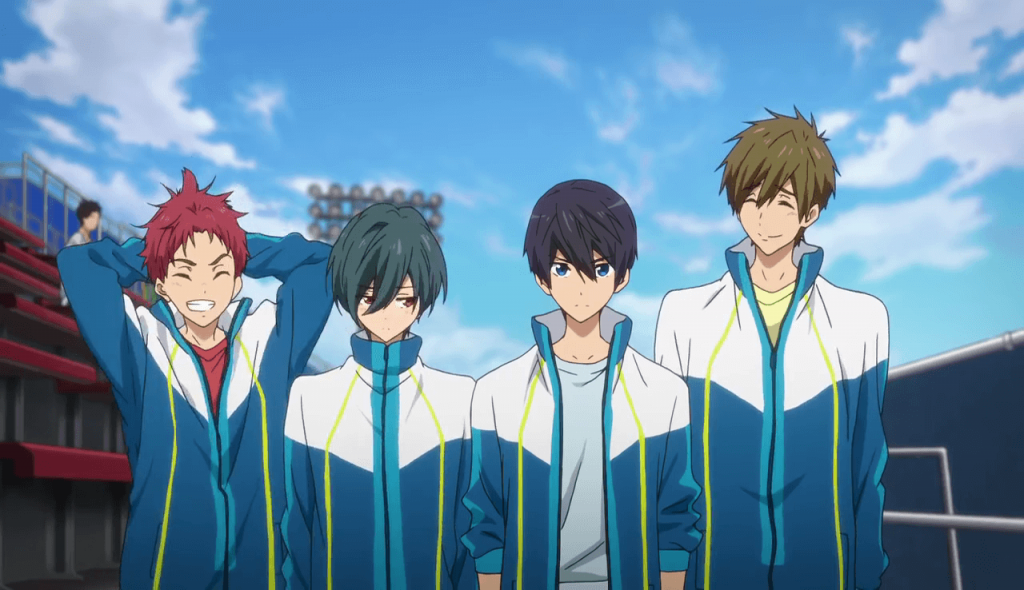
Source: High Speed Starting Days
・Extracurricular
Held after school hours, extracurricular are each their own little worlds inside the school, with many scoring their own hit titles related to their focus activity. Viewers who’d seen K-On! would probably have a pretty clear image of a light music club, and with so many popular sports anime/manga consistently coming up (Kuroko no Basuke, Free!, Haikyuu, to name some recent titles), grasping the kind of thing sports clubs do is a no-brainer.
But then, one may wonder, just how many clubs are there in a typical Japanese school? What all do they cover? Much like how their schools tend to be divided by streams (Science and Humanities), extracurricular are also categorized into two major groups: the sports clubs and the culture clubs. The sports clubs, as mentioned above, do get a fair amount of exposure, and aside from the occasional borderline supernatural moves and skills, tend to be quite grounded. The culture clubs are more focused on the arts, covering fields like photography, painting, music, and the sort. Music is often the only field that gets any huge coverage, but occasionally you get the unique culture club story, such as the Karuta-themed Chihayafuru.
・Student Council so-called Seitokai

Source: Charlotte
Speaking of the high school ecosystem, the “student council” is likely a group most people are already familiar with. Usually presented as the ruling class of the students, they hold a fair amount of power within the school system. Quite essential to the makeup of the student body, most school-based titles will readily feature the council members as secondary characters, and sometimes you may even find them being the stars of their own council-centric works. So what does this highest authority among the students actually do?
While technically an extracurricular, the student council is different from the regular clubs in that it’s centered around administrative work. Whether it be organizing the school events or keeping track of the other clubs’ budget and activities, the council’s job is to ensure that the students’ school life is running smoothly in an orderly manner. While in reality it sounds more like a regular desk job than the all-powerful clique it’s often portrayed as, one can see what the superior image the student council often has is based on.
・Culture Festival
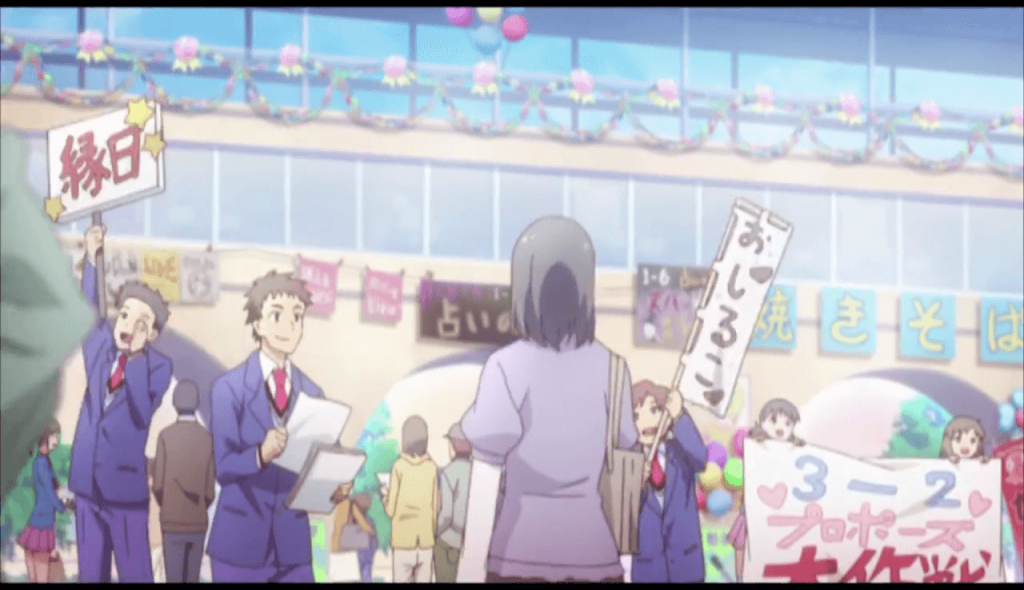 Source: Sakurasou no Pet na Kanojo
Source: Sakurasou no Pet na Kanojo
The Culture Festival is often the subject of a special filler episode feature, and perhaps for good reason–while studies are the norm for the normal school day, the Culture Festival is a time for more fun-centric activities, and often a chance to show off the results of extracurricular practice for the more performance-heavy clubs. It can be said that it’s one of the biggest events of the school year.
Usually held in autumn, the Festival includes a variety of activities–students may cook and sell food items, perform plays, play in a band, and many other activities. The preparation itself takes quite some time–between decking up the school, making props, posters, and the like, the school might convert up to one week of classes into Culture Festival preparation time. During the Festival itself, though, the school becomes open to the general public, allowing people who are interested in the school to check out what kind of things they do there. So, in a way it, also serves as a type of open campus.
The fictional ‘school’ we see in anime and manga may be obviously exaggerated for entertainment purposes, but the actual inspiration can be quite colorful as well. Finding out where fiction differs from fact can be quite an interesting and worthwhile venture, which in some cases might even increase the appreciation the viewer has for the work. Apart from the details mentioned here, there are still other standard features hiding around in school-based works–can you find more of them?
This article is written by Yakitori

